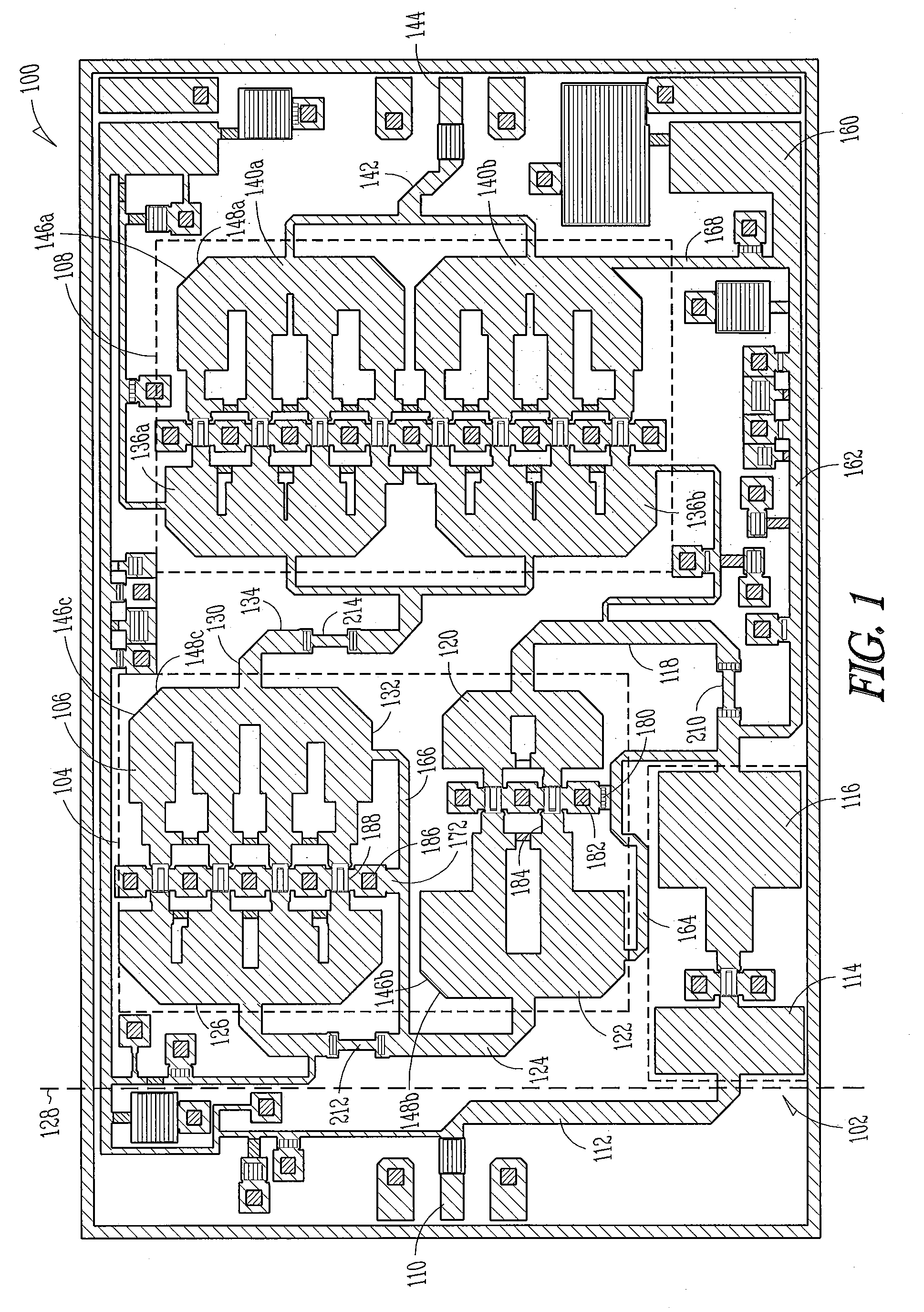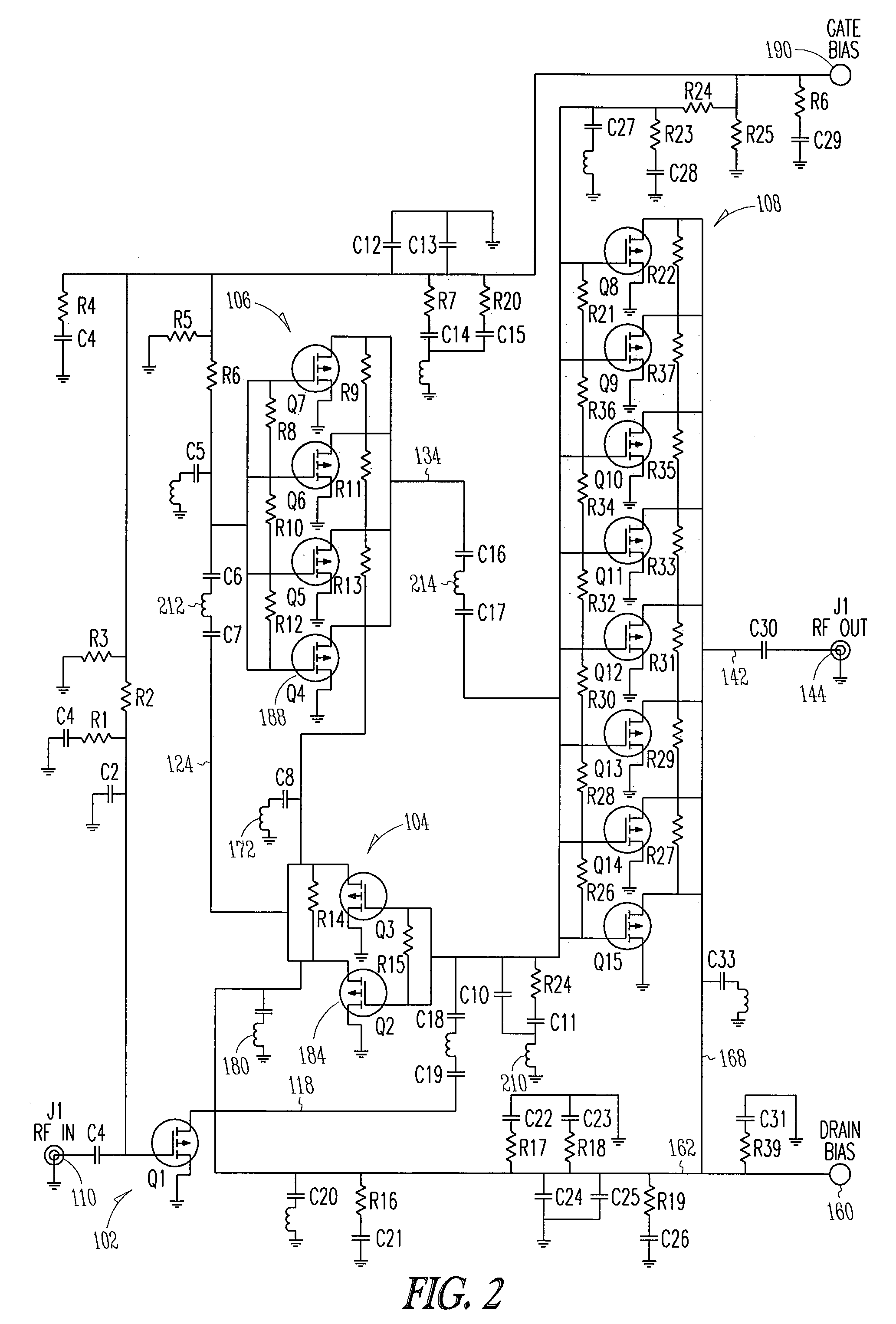Millimeter wave monolithic integrated circuits and methods of forming such integrated circuits
a monolithic integrated circuit and integrated circuit technology, applied in the direction of amplifiers with semiconductor devices/discharge tubes, amplifiers with min 3 electrodes or 2 pn junctions, amplifiers with semiconductor devices only, etc., can solve the problems of high frequency, millimeter wave integrated circuit devices that are difficult to manufacture, and do not function similarly or adequately. , the effect of reducing the number of transistors
- Summary
- Abstract
- Description
- Claims
- Application Information
AI Technical Summary
Benefits of technology
Problems solved by technology
Method used
Image
Examples
Embodiment Construction
[0013]Referring now to the drawings in more detail, and particularly to FIG. 1, the figure depicts an example layout for a multi-staged, millimeter wave amplifier integrated circuit 100, illustrating various aspects of the present inventive subject matter. As noted earlier herein, the present invention is specifically directed to a multi-stage, millimeter wave amplifier's operating act 75 GHz and above. Additionally, for the present inventors, configuration of amplifiers operating at 90 GHz and above has been a particular concern; and example amplifier 100 is intended for operation at 95 GHz. For purposes of the present disclosure, relatively high gain amplifiers, as can particularly benefit from the principles described herein, are considered those operating at a frequency at or above 75 GHz, and providing at least 15 db of gain, and a power of a least 1 Watt. In accordance with the principles described herein, and amplifier meeting at least two or more of these performance objecti...
PUM
 Login to View More
Login to View More Abstract
Description
Claims
Application Information
 Login to View More
Login to View More - R&D
- Intellectual Property
- Life Sciences
- Materials
- Tech Scout
- Unparalleled Data Quality
- Higher Quality Content
- 60% Fewer Hallucinations
Browse by: Latest US Patents, China's latest patents, Technical Efficacy Thesaurus, Application Domain, Technology Topic, Popular Technical Reports.
© 2025 PatSnap. All rights reserved.Legal|Privacy policy|Modern Slavery Act Transparency Statement|Sitemap|About US| Contact US: help@patsnap.com



